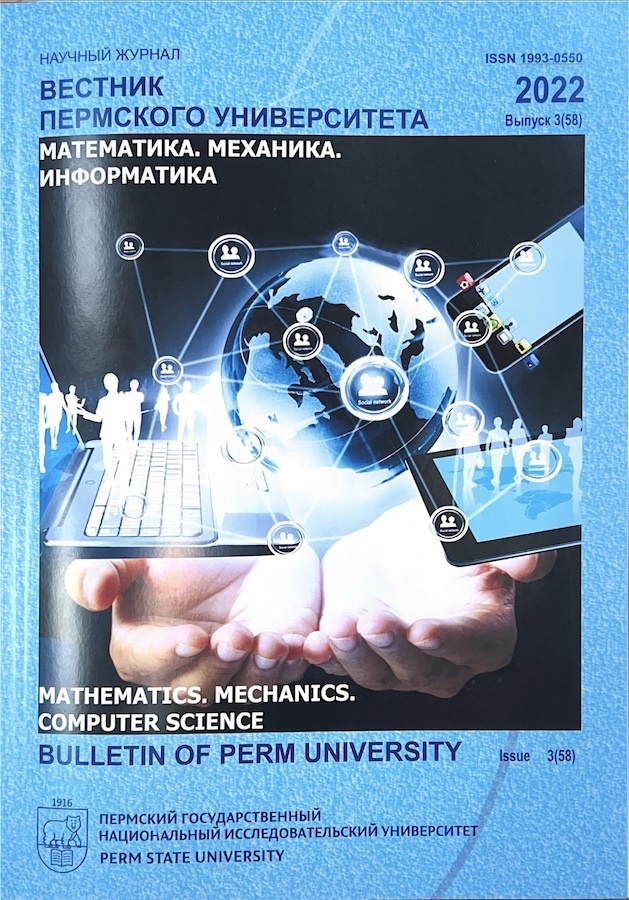An Algorithm Creating for Predicting the Inaccurate Information Presence in Social Networks in Russian Language
- Авторлар: Chernyaev A.A.1, Ivashko A.G.1
-
Мекемелер:
- Tyumen State University
- Шығарылым: № 1 (64) (2024)
- Беттер: 60-71
- Бөлім: Computer Science
- URL: https://journal-vniispk.ru/1993-0550/article/view/307270
- DOI: https://doi.org/10.17072/1993-0550-2024-1-60-71
- ID: 307270
Дәйексөз келтіру
Толық мәтін
Аннотация
The development of user-to-user communication methods, such as social media, has resulted in the amount of inaccurate information reaching record levels. This problem affects not only regular users of social media, but also the media, which may refer to such messages as a source of information. The spread of false information leads to both financial and life-threatening problems. It is almost impossible to trace these messages manually and therefore it is required to create an algorithm that can perform this process automatically. The purpose of this paper is to try to create such an algorithm for the Russian language using machine learning methods. The data on which the models are based is a sample of data that has undergone the process of manual annotation. The sample has undergone the process of preparation and balancing. From this sample, 29 attributes were obtained which can be divided into 3 categories: user, text and distribution. These attributes and were applied to obtain classification models that are able to predict with sufficiently high probability. The result of this work is an algorithm for predicting the presence of inaccurate information in a social network post.
Негізгі сөздер
Авторлар туралы
A. Chernyaev
Tyumen State University
Хат алмасуға жауапты Автор.
Email: a.a.chernyaev@utmn.ru
Postgraduate, Assistant, Engineer-Researcher, Institute of Mathematics and Computer Sciences 625003, Russia, Tyumen, Volodarskogo St., 6
A. Ivashko
Tyumen State University
Email: a.g.ivashko@utmn.ru
Doctor of Technical Sciences, Professor of the Institute of Mathematics and Computer Sciences 625003, Russia, Tyumen, Volodarskogo St., 6
Әдебиет тізімі
- Pennycook, G. (2021), "The Psychology of Fake News", Trends in Cognitive Sciences, vol. 25, pp. 321-357. doi: 10.1016/j.tics.2021. 02.007.
- Banda Juan M., Tekumalla Ramya, Wang Guanyu Yu, Jingyuan Liu, Tuo Ding, Yuning, Artemova Katya Tutubalina, Elena & Chowell Gerardo. A large-scale COVID-19 Twitter chatter dataset for open scientific research - an international collaboration (Version 67) [Data set]. Zenodo. doi: 10.5281/zenodo.5000423.
- Chernyaev, A.A., Ivashko, A.G. (2019), "Mathematical modeling estimates of the reliability of rumors in mass media", Vestnik Tyumenskogo gosudarstvennogo universiteta. Fiziko-matematicheskoe modelirovanie. Neft', gaz, energetika = Tyumen State University Herald. Physical and Mathematical Modeling.Oil, Gas, Energy, vol. 5, no. 4(20), pp. 181-199. doi: 10.21684/2411-7978-2019-5-4-181-199.
- Chernyaev, A., Spryiskov, A., Ivashko, A., Bidulya, Y.A. (2020), "Rumor Detection in Russian Tweets", pp. 108-118. doi: 10.1007/978-3-030-60276-5_11.
- Eismann, K. (2021), "Diffusion and persistence of false rumors in social media networks: implications of searchability on rumor self-correction on Twitter", Journal of Business Economics, vol. 91, pp. 1299-1329. DOI: 91. 10.1007/s11573-020-01022-9.
- Vosoughi, S. (2015), Automatic detection and verification of rumors on Twitter, pp.1-147.
- Ivanova, G.F. (2007), "About opinions and evaluations", Izvestiya Rossiyskogo gosudarstvennogo pedagogicheskogo universiteta im. A. I. Gertsena = Herzen university journal of humanities & sciences, no. 41, pp. 25-31. EDN JXKQIX.
- Emel'yanova, O.N. (2015), "Abusive and vulgar vocabulary in defining dictionaries of the russian language", Vestnik Krasnoyarskogo gosudarstvennogo pedagogicheskogo universiteta im. V.P. Astaf'eva = Bulletin of Krasnoyarsk state pedagogical university named after V. P., no. 4(34), pp. 126-130. EDN VDKKMN.
- Ramazanova, R.Z. (2020), "Parenthetic words as a means of expressing certitude in the modern russian language", Filologiya i kul'tura = Philology and Culture, no. 2(60), pp. 77-82. doi: 10.26907/2074-0239-2020-60-2-77-82. EDN PWAYJW.
- Selezneva, E.V. (2020), "A complex subordinate sentence with a subordinate condition: the content and scope of the concept", Filologiya na styke nauchnykh epokh: Sbornik statey pamyati doktora filologicheskikh nauk, professora Anatoliya Mikhaylovicha Lomova = Philology at the junction of scientific epochs: Collection of articles in memory of Doctor of Philological Sciences, Professor Anatoly Mikhailovich Lomov, pp. 158-164. EDN HESCYX.
- Shul'ga, M.V. (2002), "Quantitative evaluation in the newspaper and journalistic text", Vestnik MGUL – Lesnoy vestnik = Forestry bulletin, no. 3.
- Tumanova, A.B. (2019), "The category of time in modern science: analysis and interpretation", Neofilologiya =Neophilology, vol. 5, no. 18, pp. 131-138. doi: 10.20310/2587-6953-2019-5-18-131-138. EDN EAONIK.
- Lachowicz, D. Python Library Enchant. URL: https://abiword.github.io/enchant/ (accessed: 22.02.2023).
- Vicenzi, A. (2018). Python Library Emojis. URL: https://emojis.readthedocs.io/en/latest/ (accessed: 22.02.2023).
- Jahanbakhsh-Nagadeh, Z., Feizi-Derakhshi, MR., Ramezani, M. (2022), "A model to measure the spread power of rumors", J Ambient Intell Human Comput. doi: 10.1007/s12652-022-04034-1.
- Castillo, C., Mendoza, M., Poblete, B. (2011), "Information credibility on Twitter", Proceedings of the 20th International Conference on World Wide Web, pp. 675-684. 10.1145/1963405.1963500.
- Chawla, N., Bowyer, K., Hall, L., Kegelmeyer, P. (2002), "Smote: synthetic minority over-sampling technique", Journal of artificial intelligence research, vol. 16, pp. 321-357. doi: 10.1613/jair.953.
- Chernyaev, A., Ivashko, A. (2023), "Mathematical modeling of the assessment of credibility in a message in social networks on Russian language", Prikladnaya informatika=Journal of Applied Informatics, vol.18, no. 4, pp. 121-132 doi: 10.37791/2687-0649-2023-18-4-121-132.
- Kumar, A., Sangwan, S.R., Nayyar, A. (2019), "Rumour veracity detection on twitter using particle swarm optimized shallow classifiers", Multimed Tools Appl 78, vol. 78, pp. 24083-24101. doi: 10.1007/s11042-019-7398-6.
- Kennedy, J., Eberhart, R. (1995), "Particle swarm optimization", Proceedings of ICNN'95 – International Conference on Neural Networks, Perth, WA, Australia, vol. 4, pp. 1942-1948. doi: 10.1109/ICNN.1995. 488968.
Қосымша файлдар









